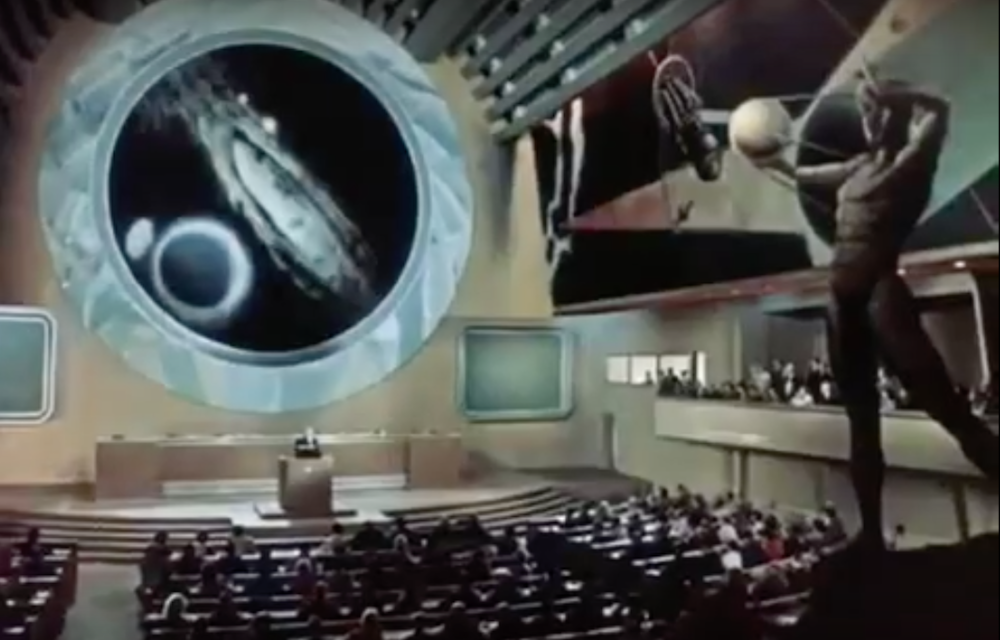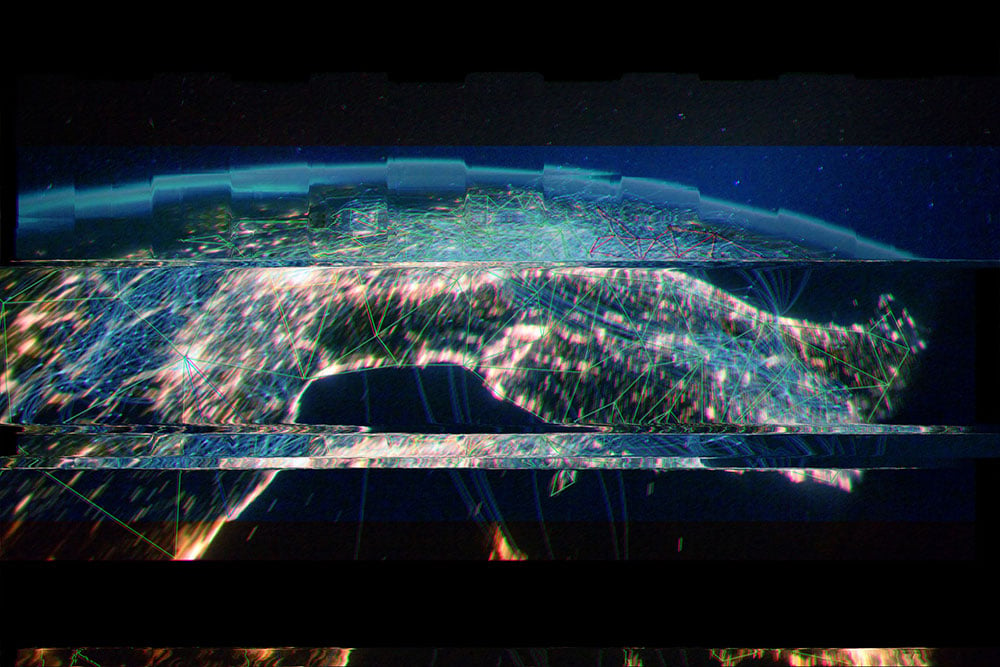The Soviet web: the tale of how the USSR almost invented the internet

When brilliant Soviet cyberneticist Viktor Glushkov designed a blueprint for a computerised planning system, the Soviet Union looked on track to become web pioneers. In the end, however, there was to be no digital network. Justin Reynolds tells the story of how the Soviets nearly created the internet
Visions of an advanced postcapitalist economy run by digital networks have long haunted the socialist imagination. Alexander Bogdanov’s 1909 Bolshevik sci-fi fantasy novel Red Star imagined the achievement of communist utopia on Mars, an abundance of wealth and leisure made possible by a sophisticated command economy planned and automated by prototype computers. Cerebral Martian engineers, their “delicate brains” connected to the machines through “subtle and invisible” threads, fine-tune economic inputs and outputs from a control room tracking production gluts and shortfalls.
Bogdanov’s thought experiment anticipated contemporary speculations about the possibilities digital networks open for new forms of economic exchange. One current best-seller, Paul Mason’s Postcapitalism, suggests that the ease with which information can be shared online, together with the advent of 3D printing technologies, is seeding a new economy in which goods and services can be exchanged for free. Another, Nick Srnicek and Alex Williams’s Inventing the Future, envisages an automated economy set in motion by the seamless interactions of millions of connected devices.
Cybersyn control room, Chile. Image: Gui Bonsieppe under a CC license
Many of today’s digital utopians draw inspiration from a real world attempt to implement electronic socialism: Salvador Allende’s abortive 1970s programme that sought to rationalise and democratise the planning of the Chilean economy through a nationwide network of telex machines. “Project Cybersyn” was cut short by Pinochet’s coup, but, helped by the surviving images of its iconic retro-futurist central operations room, the episode continues to symbolise radical aspirations to harness technology to break through to an alternative economic system.
Cybersyn was conceived during the same era as a still more ambitious but less well documented project: a well-resourced programme to digitise the planning of the Soviet Union’s vast command economy. The labyrinthine story of the “Soviet internet” is told in detail in a new book by Tulsa University professor Benjamin Peters, who, venturing into Moscow archives “lit by a single flickering light bulb”, pieces together the tale of plans to supercharge the USSR’s stuttering economy through the installation and networking of a constellation of mainframe computers at major production points from Leningrad to Siberia. The project was one of the most spectacular manifestations of the restless Soviet ambition to lever technology to create the material conditions for “full communism”.
The 1970s was an era of harnessing technology to break through to an alternative economic system
From the beginning the USSR was intoxicated by an aesthetic of the machine. Lenin equated the achievement of socialism with the electrification of the nation. Planners sought to apply Fordist production techniques on an unprecedented scale. And avant-garde designers, architects and filmmakers insisted engineering was art, and art was engineering. But those visions far outran the technology available to the impoverished state. Stalin resorted to a forced march industrialisation programme that rammed Russia’s patchwork economy into a rigid pyramid structure, the output of factories and farms coordinated through targets set by regional authorities reporting to a central planning ministry.
This hulking machinery carried the USSR through successive five year plans achieved at the cost of monumental waste of human life and natural resources. Calculation errors caused chronic production shortfalls or overshoots that cascaded up and down the command chain and rolled on from year to year. By 1960, 3 million officials were attempting to track the economy’s unfathomable information flows, and it was forecast that if future growth targets were to be met, a bureaucracy equivalent to the entire working population would be required with 20 years.
Map of OGAS computer centres, 1964
To get things done, planners, managers and workers resorted to informal networks that criss-crossed official hierarchies. Far from being the rigid hierarchy of popular imagination, the Soviet economy relied on a vortex of informal ties and personal favours. But by the Khrushchev era, science seemed to be catching up with those early revolutionary dreams. Inspired by the new field of cybernetics — the study of information systems in nature, machines and human societies — Soviet economists began to reimagine the command economy as a reflexive system capable of recalibrating planning flows in response to new inputs. Emerging mainframe computing technologies would provide the number-crunching firepower to make it possible.
By the late 1950s a comprehensive blueprint for a computerised planning system had emerged: the All-State Automated System — known as the OGAS — designed by the brilliant cyberneticist Viktor Glushkov. Glushkov proposed overlaying a vast digital network on the economy’s pyramid structure: some 20,000 mainframes at major production points would be connected to hundreds of regional administrative centres pushing data to a central processing hub in Moscow.
By the late 1950s a comprehensive blueprint for a computerised planning system had emerged: the All-State Automated System — known as the OGAS
The OGAS anticipated cloud computing, allowing authorised workers, managers and administrators to input information to a central database accessible to all users, and looked ahead to today’s virtual currencies, proposing that physical money would be rendered redundant by the system’s capacity to process transactions using electronic receipts. The proposal was unashamedly utopian. Glushkov’s design aspired to the Marxist ideal of a rational economic system guided by worker inputs, and, like the engineers who led the Soviet space programme, he was captivated by the Russian cosmist desire for a kind of synthetic immortality. Rather like 21st century advocates of a “technological singularity”, Glushkov believed that, one day, ever more advanced networks would make it possible to upload personalities embedded in human neural circuits to a supercomputer.
The scale of the OGAS matched its philosophical grandeur: costing 20 billion rubles (today approximately $333.4 million) and requiring some 300,000 operators it would be rolled out over 30 years. And, in the beginning at least, it was an ambition the Soviet leadership shared. Glushkov was appointed head of a new Institute of Cybernetics, one of several well-funded research centres with a remit for digital innovation.
Viktor Glushkov speaking about management information systems. Image: ResearchGate
The project prospered during the Cold War high point of post-war Soviet technological optimism, the era of Sputnik and Gagarin. When rumours of Russian ambitions for rapid economic expansion reached an American government already concerned that Soviet space exploits signalled an emerging communist supremacy, the US redoubled efforts to build its own network, the ARPANET, the forerunner of today’s internet.
By 1970 Glushkov’s plan was ready to go before the Politburo for approval, which, with the promised backing of General Secretary Leonid Brezhnev and Premier Aleksei Kosygin, it seemed destined to secure. But it was not to be. Entering Stalin’s former office in the Kremlin to formally present his proposal, Glushkov noticed that Brezhnev and Kosygin’s chairs were empty. Their absence — ostensibly to attend state functions elsewhere — emboldened Finance Minister Vasily Garbuzov to force through a counterproposal that ripped the heart out of the plan. Permission was given to install computers at key production centres but not, crucially, for linking them together. The existing planning bureaucracy would be retained: there was to be no digital network. The OGAS, it seemed, whatever its promise, threatened too many vested interests.
In the end, there was to be no digital network as the OGAS, it seemed, threatened too many vested interests
After repeatedly failing over the following years to revive interest in his plan, the rational Glushkov began to succumb to conspiracy theories, suggesting interference by American spies, and that the emergency landing of a flight he had taken shortly after the Politburo meeting had been caused by sabotage. Glushkov died in 1982, by which time the Soviet leadership had pinned its hopes for economic renewal on limited market liberalisation, an approach that rendered the concept of a computerised command economy redundant.
In retrospect, the OGAS seems absurdly ambitious. The development of such a vast network would have necessitated a depth and duration of political commitment even an authoritarian regime could unlikely sustain, and it is doubtful that early mainframe technology would have been capable of processing so much data (quite apart from the vexed question of whether the very concept of a complex planned economy makes sense.) The OGAS could only have been conceived during an era when boundless faith in the possibilities of new technology, and Cold War imperatives, made utopian thinking possible.
And yet their remarkable space programme gave the Soviets some justification for believing that they were capable — quite literally — of aiming for the stars. Why did economic modernisation, a project of similar scope and importance, to which thousands of their best minds had been dedicated, fail so completely?
New Planet, Konstantin Yuon (1921)
Peters’s narrative suggests Glushkov’s plan failed precisely because it promised radical efficiencies, even had it only been partially fulfilled. Its implementation would have required the support of the bureaucracy that benefited from the wasteful processes computerisation sought to eradicate. State ministries enjoying the powers and privileges associated with managing the Soviet economy, and fearing the prospect of looming redundancy, had tried to scupper the OGAS for years prior to Garbuzov’s intervention at that fateful Politburo meeting. The Soviet bureaucracy was more akin to an unregulated market in which self-interested administrators competed for influence than a monolithic structure in which private interests were suppressed.
For Peters the paradox is that the first civilian digital networks were created by “cooperative capitalists, not competitive socialists”. The US succeeded in developing the ARPANET by nurturing a collaborative culture between government, military and civilian institutions that a chaotic Soviet administrative system was unable to cultivate. The moral of the sad story of the Soviet internet is that making new technologies work for the common good depends on mutual obligation and effective regulation: the rule of law, clear governmental structures, and coordination between the public and private sectors.
The moral of the sad story of the Soviet internet is a cautionary tale that haunts our 21st century internet
It’s a cautionary tale that haunts our 21st century internet. Whereas Glushkov’s OGAS was destroyed by competing bureaucrats, today’s “open web”, nurtured in its infancy by collaboration between state, civilian and commercial actors, is being broken apart by private interests, parcelled into closed platforms dominated by giant corporations and exploited by authoritarian governments taking advantage of unprecedented opportunities for monitoring citizens.
Today, Bogdanov’s Red Star is usually remembered for its unabashed utopianism and steampunk contraptions. But Bogdanov was less interested in the technology he dreamt up than the capacity of his Martian engineers to use it wisely. The disciplined Martians had succeeded where fractious humans had so far failed.
Similar thoughts preoccupied Glushkov in his final years. The last book he wrote was intended for young readers: a brief introduction to the possibilities digital networks might offer for — one day — producing Red Plenty. Disillusioned by what his peers had made of his great design, Glushkov invested his hopes in future generations who might yet cultivate the wisdom to make technology work for all.


